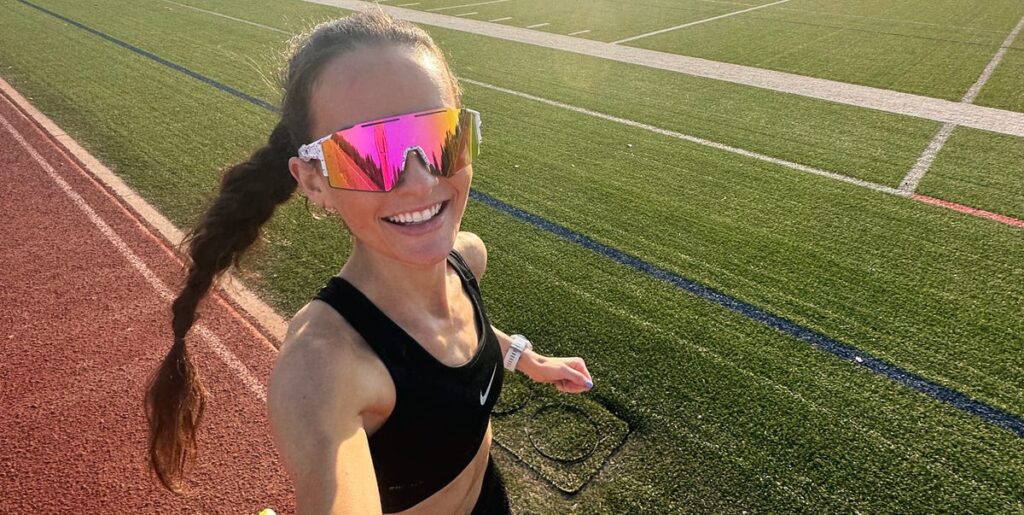At 27, Lindsey Bradley embodies the spirit of resilience inherent in endurance sports. Her relationship with running has evolved from one marked by anticipation and joy to a journey of facing relentless challenges and embracing her passion with newfound appreciation.
Bradley reflects on her early career, remembering the excitement that came with her morning runs fueled by coffee. However, beneath that enthusiasm lies a tapestry of experiences; she carries the weight of advice that suggested she cease competing and the physical toll of injuries that sidelined her for extended periods. Each setback was not just a physical challenge but a test of her mental fortitude. When faced with the painful reality of being sidelined, she discovered a profound mental resilience. Her mantra shifted from feeling obligated to run to recognizing the privilege of being able to lace up her shoes and hit the road. This mindset transformation not only eased her dread of an upcoming run but invigorated her approach to training and competition.
In the elite realm of endurance athletics, where physical prowess often takes the spotlight, Bradley’s story underscores the critical role of mental perspective. After years defined by the uncertainty of injury, she found motivation in the knowledge that she had overcome substantial barriers. The emotional strength gained through her tribulations became a cornerstone of her identity as an athlete. Whereas many might view running as a chore, Bradley’s mindset transitioned towards regulation; she embraced a sense of gratitude for every run, seeing it as an opportunity rather than a burden.
Even once she returned to racing, Bradley faced ongoing challenges, including a particularly grueling post-surgery recovery and subsequent injuries. Each time she found herself at the starting line again, she did so with deep authenticity—knowing full well the cost and effort it took to be there. Rather than shying away from the physical demand of marathon training, she recognized it as an integral piece of her journey. Gradually, with the guidance of a coach, she shifted her training philosophy, opting for a more sustainable approach that included strength training and injury prevention. This strategic adaptation not only preserved her physical health but allowed her to maintain a balance between her job as a corporate recruiter and her pursuit of athletic excellence.
Empathy towards her own capabilities became vital in encouraging her growth. Instead of rigidly adhering to intensive training schedules from past years, she leaned into the flexibility that came from understanding her body’s responses, evolving her strategy based on how she felt on any given day. This willingness to adjust reflected a more profound understanding of pacing—not just in races, but in life.
Her trajectory led to an impressive personal best at the Indianapolis Marathon, where she clocked in just under 2:32, a concrete testament to her resilience. But it wasn’t merely the time that defined her success; it was the realization that she had built something meaningful from years of hard work. The competition provided proof that the grind was worth it, and the number on the clock became indicative of her grit rather than just her ability.
As she eyes future races like the Boston Marathon, the focus shifts similarly from the outcome to the journey. Her previous injuries serve as reminders of her vulnerability, yet they also highlight her capacity for recovery and adaptation. It’s important to recognize that each individual’s story within endurance sports is unique, carved by both shared and solitary experiences. While Bradley grapples with her injuries and the demands of her daily life, she remains grounded and attuned to her potential, anticipating the challenge ahead with excitement.
The embrace of community among fellow runners—those who understand the rigors of training, the sacrifices made, and the emotional rollercoasters endured—creates a strong support system. Acknowledging the shared burdens of injury and competition fosters an environment of encouragement. For Bradley, those relationships became crucial during her setbacks and triumphs alike, illustrating the importance of leaning on others in a sport that can often feel solitary.
Bradley’s journey reminds us that endurance sports demand more than physical stamina; they require mental tenacity and the ability to reframe setbacks as stepping stones to success. Her insight into the mindset behind racing and training holds lessons beyond running: they resonate in the life of anyone pushing boundaries, striving for growth, or working towards long-term goals.
In every long session going forward, the takeaway to carry with you is clear: embrace each run as a privilege, cherish every opportunity to compete, and remember that the path is as important as your destination. Focus not solely on the clock, but on the grit and grace you cultivate along the way.
